Dateline – June 2022 – Lubbock, Texas
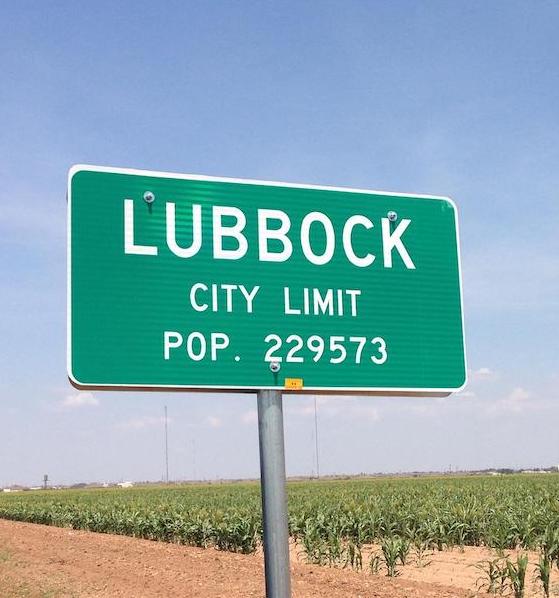
Lubbock, Texas is home to some very unique urban wildlife situations. Located in the Texas Panhandle, far to the west of Dallas/Fort Worth, the city of Lubbock has several critters that live there in abundance, which are only very rarely—or never—encountered in the DFW metroplex. And if you are willing to hit the road for short drives into the Lubbock area backcountry, it is possible that you will encounter a number of additional species whose distribution also ends well west of DFW. It’s always a treat to visit Lubbock when I can afford a little extra time to explore and make new discoveries.
I’ve made the effort to do a little wildlife photography in Lubbock on a couple of occasions in the past, and both times were fairly productive. You can read all about them by following the links below…
ARTICLE: West Texas Wildlife
ARTICLE: Lubbock Town
On one particular earlier visit to Lubbock I made note of a particularly large Prairie Dog town covering several hundred acres of vacant lot just outside of the city’s main loop. The ground at this location is fairly well saturated with burrow openings, and there is constant movement to be seen as the chunky and engaging rodents go about their daily business. Whether they are foraging for seeds, wrestling with each other, or barking there namesake alarm calls, these Prairie Dogs are endlessly entertaining to observe.

Click to Enlarge

by the blotchy breast plumage
But it wasn’t just Prairie Dogs that attracted my attention to this spot. Burrowing Owls by the dozens also frequent this plot of land—a particularly high concentration in my experience. I was so thoroughly impressed by the number of owls I observed on my last visit, that I decided they merited a special project when I next returned to this part of town.
Burrowing Owls have a special charm all of their own. They can appear deadly serious in one moment, only to be ridiculously comical in the next. I have heard them likened to bespectacled old men standing with their arms folded behind their backs, and I believe that is a dead-on characterization.
Burrowing Owls commandeer Prairie Dog burrows for their own uses as shelter and nesting sites. Residing owls can often be found stationed on the ground just outside a burrow entrance, standing tall on alert. When they spot something of interest, Burrowing Owls will do a comical, circular head bob as they try to size up whatever it is they are looking at. These owls are also incredible fast runners. So fast in fact, that they look silly doing it—zoom they go, as they shoot from one point-of-interest to another.


Note the Mourning Dove at the bottom left for scale

It was for these and many other reasons that I decided to bring a couple of tripod-mounted trail cameras with me on my latest visit to Lubbock, Texas. My plan was to place these cameras near a few prime Prairie Dog dens—ones that I knew to be occupied by Burrowing Owls—and over the course of a couple of weeks, attempt to record some videos of their behaviors throughout the day and night.
On site with the cameras, bad luck raised its ugly head almost immediately. One of the cameras had failed and would not record images or video. Now I was down to only one trail camera, and consequently there would be only one Prairie Dog den I could monitor.
The burrow I selected housed three juvenile owls and their parents. Juvenile Burrowing Owls can be easily recognized by the light coverts on their wings and there uniformly light-colored breast feathers. The adults, on the other hand, can be distinguished by their slightly larger size and by the blotchy light and dark patterns on their undersides. I set up the camera’s tripod a few feet from the burrow and left the unit to run for nearly two full weeks. Lot’s of great video resulted!
their parents, sunning their feathers, wrestling, and practicing their hunting skills
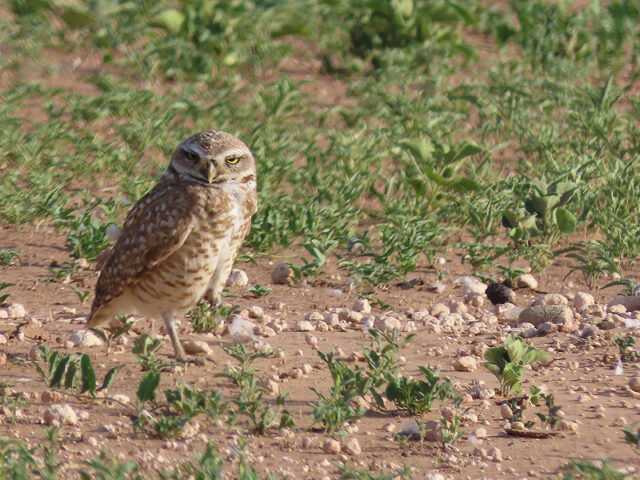
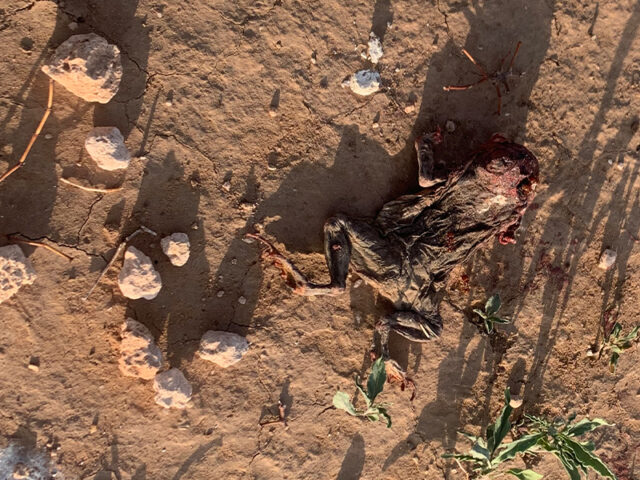
Our guess is that the baby owls preferred to use these carcasses
for hunting practice rather than for food
In addition to setting up the trail camera for the Burrowing Owls, I also took a little time to photograph a few of the charming Prairie Dogs as they went about their business decidedly undisturbed by my presence—as well as that of the nearby neighborhoods, businesses, and automobile traffic. These chunky rodents have adapted well to urban living!
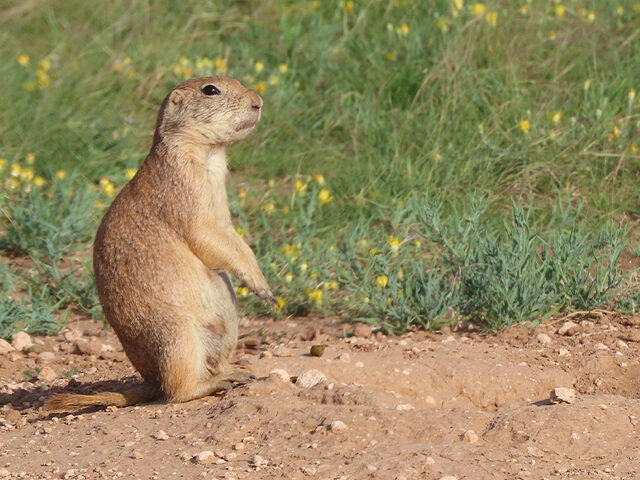
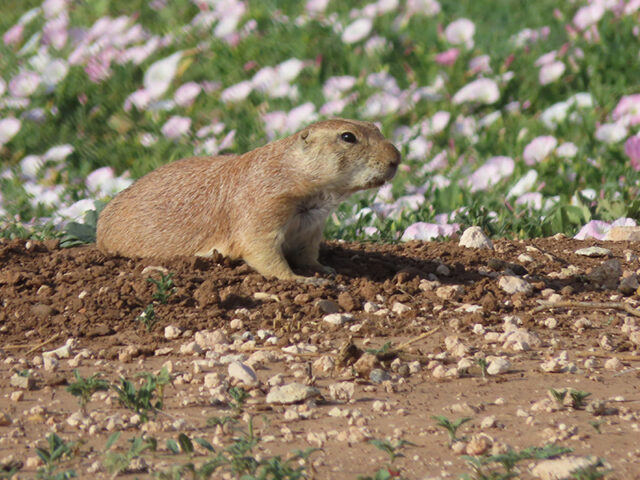
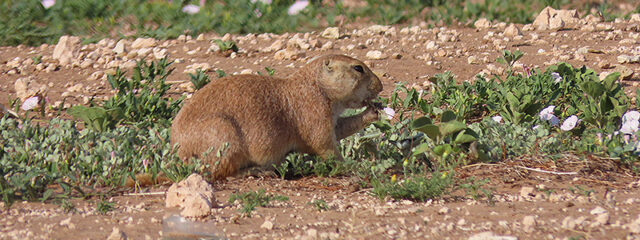
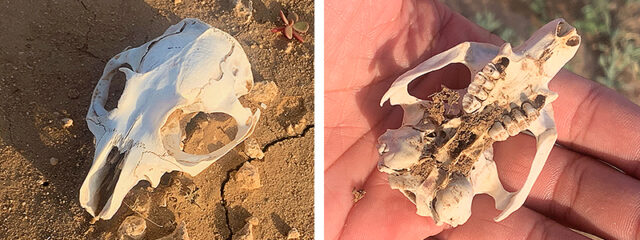
Also present at this site were a number of cottontail rabbits. Judging from their habits, appearance, and habitat, these would be Desert Cottontails—a different species than the Eastern Cottontails common throughout the Dallas/Fort Worth metroplex. Specifically, Desert Cottontails are paler in color and have longer ears that their Eastern Cottontail cousins. Desert Cottontails are also know to be attracted to burrows dug out by other animals, and they can be more communal in their behavior than the Eastern Cottontail. Finally, Desert Cottontails prefer drier, scrubbier habitats, as opposed to more wooded areas favored by the Eastern Cottontail.
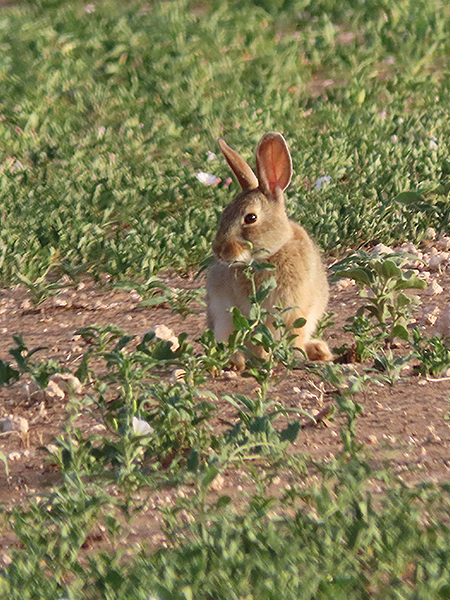

Over the last couple of years I have had the opportunity to photograph a pretty nice collection of unique wildlife found in and around Lubbock, Texas. Here’s the short list: Sand Hill Cranes, Black-tailed Prairie Dogs, Black-tailed Jackrabbit, Burrowing Owls, and Mule Deer. There is at least one other critter I would like to add to this list if I’m able. I have it on good authority that there are a few locations in Lubbock proper where Thirteen-line Ground Squirrels can be found.
It’s been quite some time since I’ve seen a Thirteen-lined Ground Squirrel. When I was a boy growing up in Lewisville, Texas, there were still a couple of place around town where you might see a ground squirrel or two. I can remember finding them on the soccer fields at the lake park, and I seem to remember another population living in a small cemetery on the others side of the interstate. Sadly, those two squirrel populations are long gone now, as are all others located in DFW—to the best of my knowledge (if you happen to know of any still found here in Dallas/Fort Worth, please let me know!). It would really be great to get to observe these charming little creatures again after all these years, and I’m looking forward to getting back out to Lubbock in the near future for an attempt to photograph and video these interesting ground squirrels. Keep an eye out for the pictures, videos, and story in an upcoming article that will surely result!
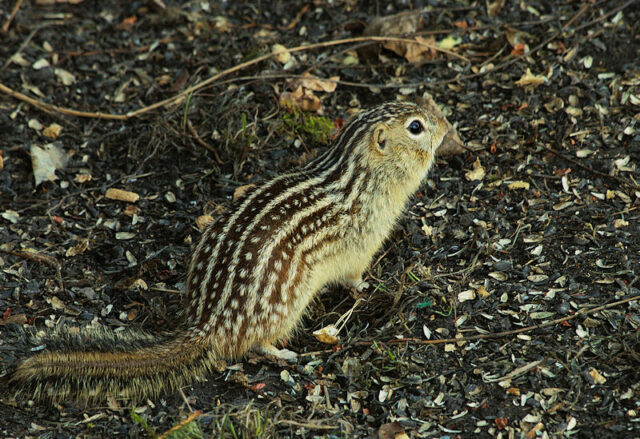
Picture courtesy Wikipedia


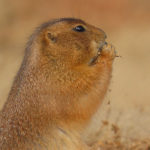
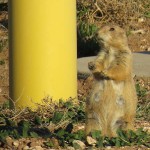

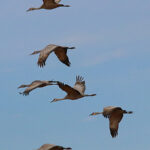

Hello, Nice article. Another place in Lubbock with a prairie dog colony (there are many, as you said) is the airport. Jack rabbits there, too, and perhaps burrowing owls. But for sure the dogs and hares.
If there are thirteen lined ground squirrels in the Metroplex, Earl Zimmerman, Professor Emeritus at UNT would know where. Are there none at the Fort Worth Nature Center (or whatever they’re calling it now)? Lots of golf courses used to have them. They used to be common on the UT Arlington campus. Sure is sad that so many creatures have suffered so much decline as mankind has proliferated.
Hi David,
I cannot say for sure if there are any ground squirrels left in the metroplex. I have made a few efforts in and around Lewisville to turn up any remnants of that population. No luck. The last time I saw one in Lewisville would have been in 1982. As far as UTA or the Fort Worth Nature Center, I just can’t say. I do know that there are no records of Thirteen-lined Ground Squirrels in the DFW area recorded on iNaturalist, which is telling, I think. There are plenty of iNaturalist record in Lubbock, for instance. I’ve been on the look out for reported sightings in DFW for at least fifteen years now, and have not received a single lead. It doesn’t look promising, but who knows, maybe they will turn up in some forgotten corner of the metroplex. It would definitely be interesting to learn more about what happened to them, and what made them vulnerable.
Chris, There was a thesis out of UNT some years ago concerning thirteen lined ground squirrel behavior in the Fairfield Cemetery in Gainesville, Texas. The report mentioned that there were many of the little squirrels in the cemetery. I realize that Gainesville is outside the strict definition of the MetroPlex and that the squirrels may not still be there. But if they are, then that might suggest that they still exist in North Central Texas a bit further south, as well. A review of _The Mammals of Texas_ suggests that they have declined significantly in the central part of their Texas range (that might mean the Abeline area?), and that there are no recent reports or records of them in the southern part of their range, but that would mean well south of Waco.
Great article David. Thanks! We have a lake house at Buffalo Springs Lake, and we are beginning to see Bob White Quail and Horned Toads!! Very fascinating.
Ed, I am sure you meant your comment for Chris. Neat that you are seeing bob whites and horned lizards on your place. Both have shown serious decline in most of their range over the past 40 years, and seem to be really scarce now. Out Lubbock way scaled quail (called “blue quail” in most of Texas) were historically more common than bob white’s, but there were, before the great decline, bob whites in suitable habitat in the rolling and high plains. That was mostly in riparian areas, and your Buffalo Lake property probably is at least partially wooded.